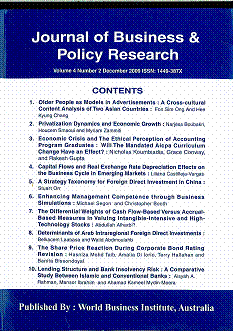Pages
164 – 177
Psychological capital (PsyCap: involving self-efficacy, optimism, hope and resilience) clearly contributes to organisational success, as indicated in western-based studies. But does psychological capital operate in a stable way across cultures? Few or no studies had addressed this issue. We were able to examine, in a multicultural industrial organisation (centred in Europe but with Asian and US regional centres), how psychological capital was related to workplace engagement and self-perceived quality of workplace performance across the organisation. A sample of 183 employees from the multinational organisation completed the Psychological Capital Questionnaire (PCQ), the Utrecht Work Engagement Scale (UWES), a one-item self-perceived performance scale (on contribution made to the organisation) and a demographics questionnaire identifying position level held (manager, other) and other data. There were 55 employees from America, 69 from Europe and 59 from Asia. Strong similarities across the cultural groups were found when regression equations, controlling for position held, examined how well PsyCap predicted first, work engagement of individuals, and second, the employees’ perceived performance in contributing to the organisation. The results largely confirmed the stability of psychological capital and its effects, across regions, with HR implications for organisations with multinational operations. Limitations and future research directions are indicated.

